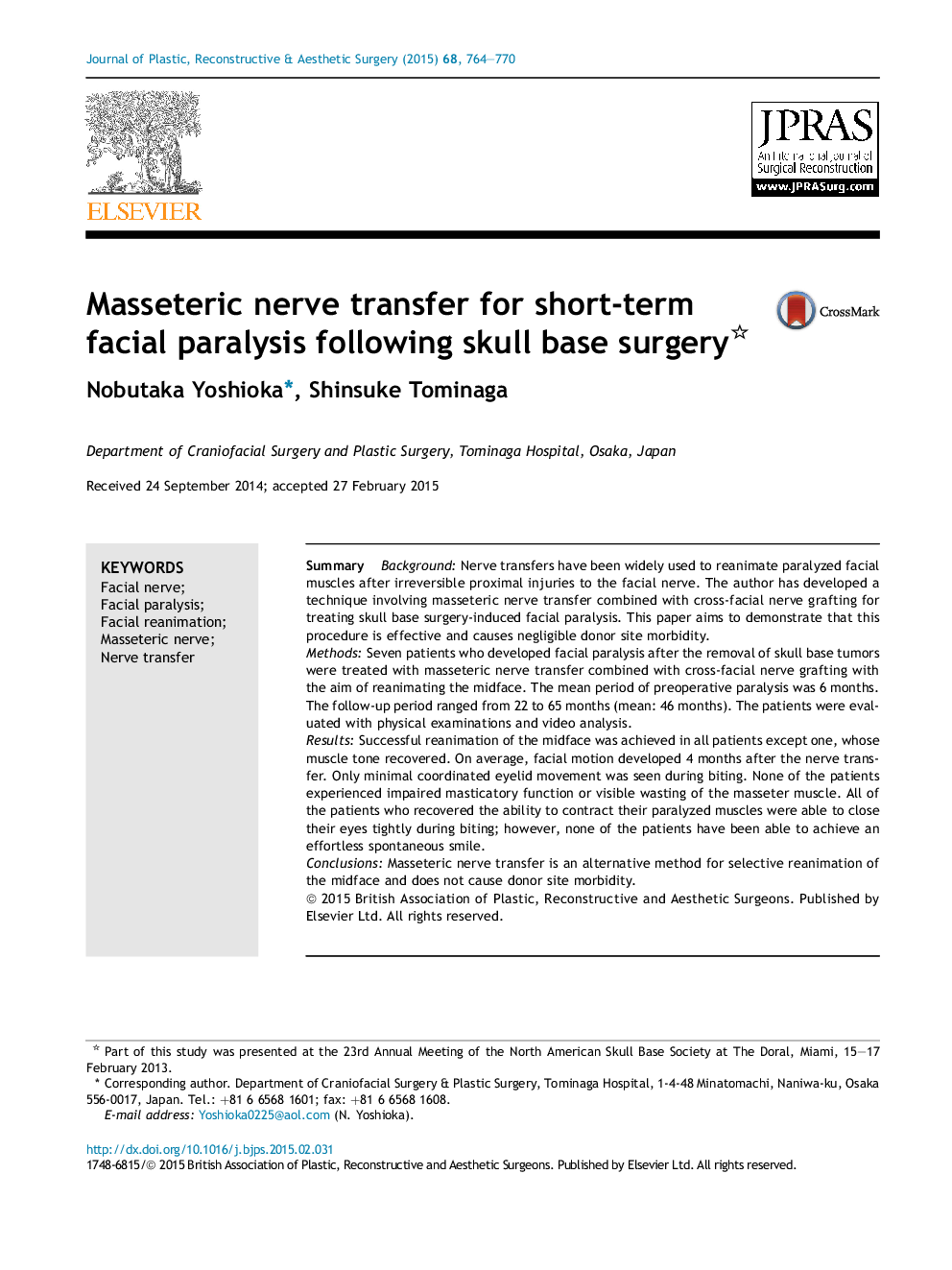| Article ID | Journal | Published Year | Pages | File Type |
|---|---|---|---|---|
| 6214476 | Journal of Plastic, Reconstructive & Aesthetic Surgery | 2015 | 7 Pages |
SummaryBackgroundNerve transfers have been widely used to reanimate paralyzed facial muscles after irreversible proximal injuries to the facial nerve. The author has developed a technique involving masseteric nerve transfer combined with cross-facial nerve grafting for treating skull base surgery-induced facial paralysis. This paper aims to demonstrate that this procedure is effective and causes negligible donor site morbidity.MethodsSeven patients who developed facial paralysis after the removal of skull base tumors were treated with masseteric nerve transfer combined with cross-facial nerve grafting with the aim of reanimating the midface. The mean period of preoperative paralysis was 6 months. The follow-up period ranged from 22 to 65 months (mean: 46 months). The patients were evaluated with physical examinations and video analysis.ResultsSuccessful reanimation of the midface was achieved in all patients except one, whose muscle tone recovered. On average, facial motion developed 4 months after the nerve transfer. Only minimal coordinated eyelid movement was seen during biting. None of the patients experienced impaired masticatory function or visible wasting of the masseter muscle. All of the patients who recovered the ability to contract their paralyzed muscles were able to close their eyes tightly during biting; however, none of the patients have been able to achieve an effortless spontaneous smile.ConclusionsMasseteric nerve transfer is an alternative method for selective reanimation of the midface and does not cause donor site morbidity.
